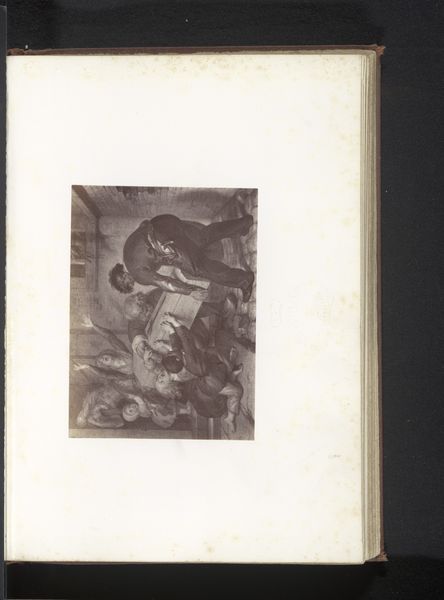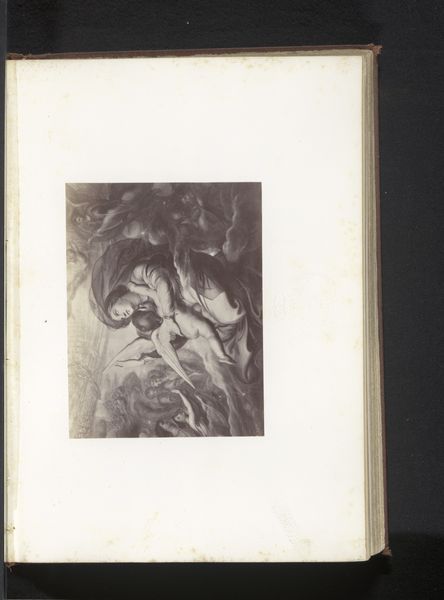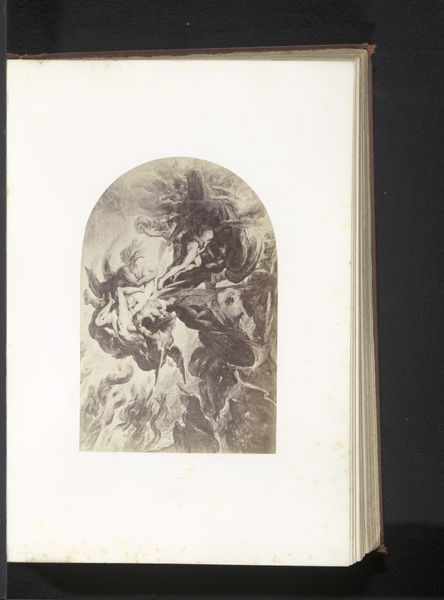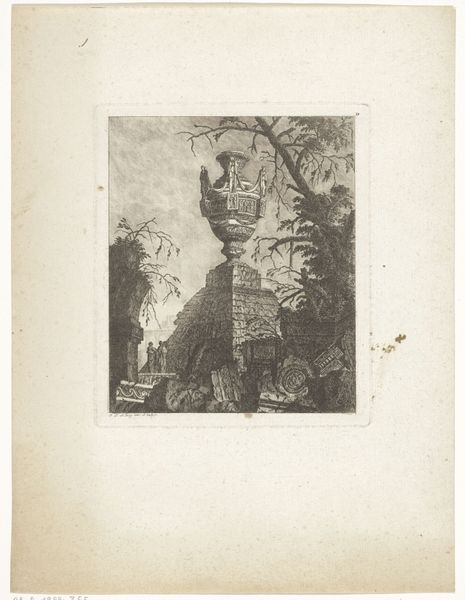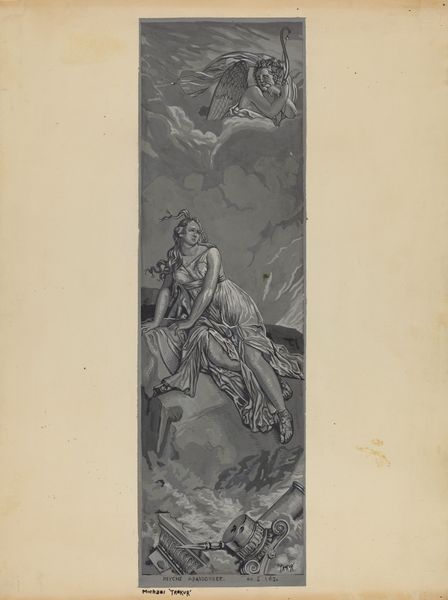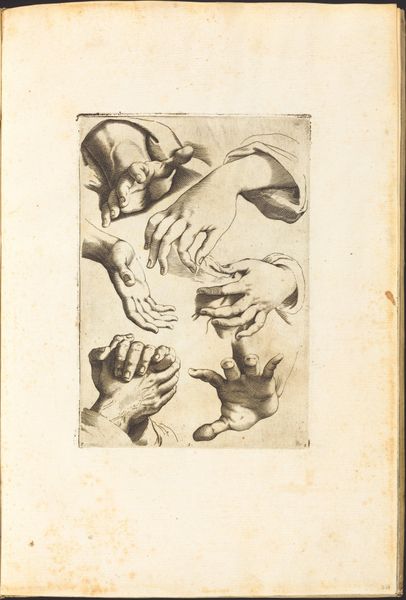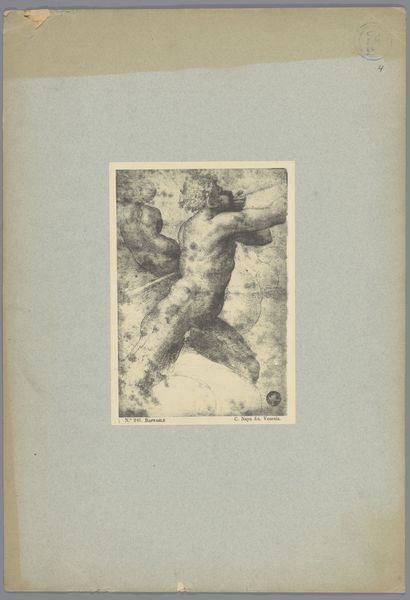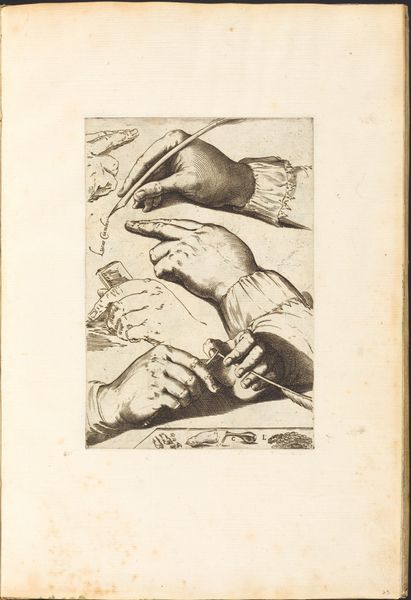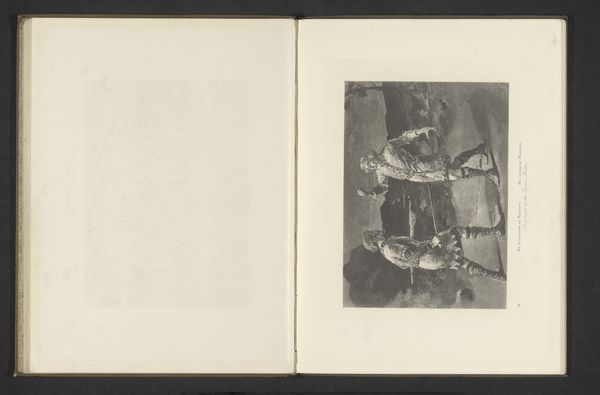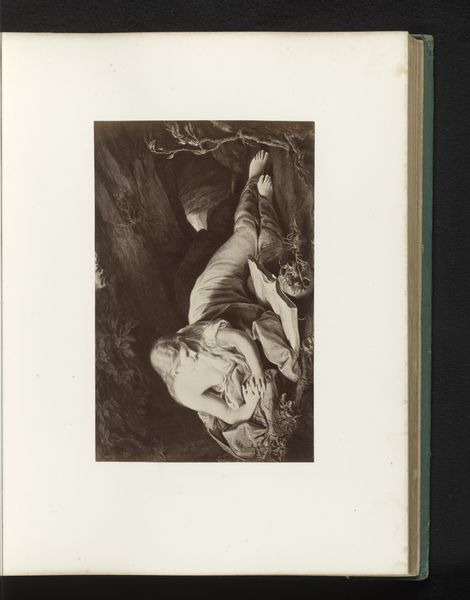
print, photography
portrait
photography
realism
Dimensions: height 44 cm, width 29 cm
Copyright: Rijks Museum: Open Domain
Curator: This is the cover of "1938 in beeld", likely published in 1939, as a photographic print from Algemeen Handelsblad. The title translates to "1938 in pictures". What is your first reaction to it? Editor: It's unsettling. The chiaroscuro is heavy, giving a dramatic, almost cinematic feel. The central figure's face is quite menacing, wouldn't you agree? And is that lightning in the background? Curator: Indeed. Considering the socio-political context of 1938, we see rising tensions in Europe. Perhaps that menacing figure, caught in stark light and shadow, is meant to represent an embodiment of those anxieties, maybe even foreshadowing the encroaching war. Editor: The lantern he's carrying seems significant, doesn't it? In classical symbology, a lantern often represents enlightenment or knowledge. Is he bringing light to a dark situation, or is it more complicated than that? Curator: I'm leaning towards the latter. His grip on the lantern is tight, almost possessive, and his expression doesn't suggest benevolence. He appears suspicious. The lantern might symbolize a corrupted form of knowledge or a light leading people astray. Also, the photographic element speaks volumes – this is purported 'realism' yet manipulated for overt propaganda purposes, so there is an agenda embedded. Editor: That's a compelling interpretation. I also find myself drawn to the lightning motif, a signifier for conflict and chaotic energy. It contrasts with the almost fragile light emanating from the lantern, further amplifying the mood of foreboding. Curator: Right, and look at the artist’s signature; 'BOEVE'. The connotations associated with this word and how it related to the depicted visual world need exploration through theory to unveil the power relationships behind representation. Editor: Looking closer, I notice the subtle realism of the hands, very carefully drawn and rendered. Curator: Yes, that commitment to verisimilitude is strategic, it lends credence to what could otherwise be perceived as a simple political scaremongering. It uses fear in a way that imprints into the cultural psyche. Editor: So, beyond just documentation, we see a strategic crafting of imagery intended to shape public sentiment. Curator: Precisely. It speaks volumes about the cultural anxieties of the era and, disturbingly, still resonates today in an age of misinformation and propaganda. Editor: It's remarkable how symbols and archetypes continue to echo through history. Seeing this piece, it forces us to confront how fear can be manufactured.
Comments
No comments
Be the first to comment and join the conversation on the ultimate creative platform.
